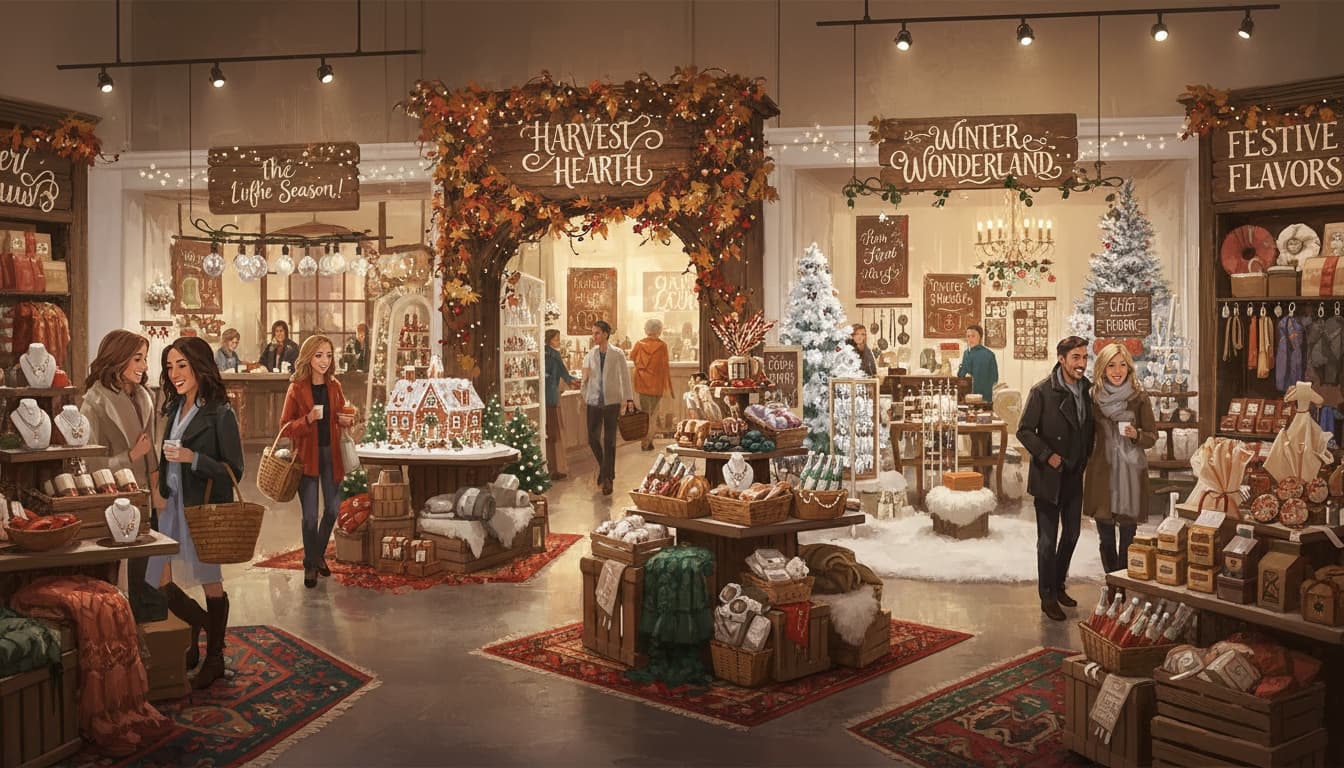Retail promotions are one of the most visible levers for driving sales, but not all promotions work the same way. Some create short lived spikes with low margins. Others build habit, attract new customers, and increase long term revenue. The difference is in how well they use psychology, timing, storytelling, and smart digital interactions. This guide shows the best retail promotions, why they work, and how to apply them in a practical way inside your own store.
Design retail promotions that actually convert
Use psychological triggers, seasonal timing, gamification, and QR based experiences to drive sales and loyalty.
Why the best retail promotions work
Effective promotions are not just about lower prices. They work because they tap into specific psychological triggers and match the context of the customer. Scarcity, urgency, social proof, reciprocity, commitment, and curiosity all influence how people respond to offers. When you use these triggers intentionally, promotions feel exciting instead of random.
Good promotions also fit the brand and the store experience. They reinforce your positioning rather than damaging it with aggressive discounts that train customers to wait for sales. The goal is to combine short term lift with long term loyalty.
Core promotion types that still drive results
There are many ways to design retail promotions, but some structures consistently perform well across categories. These formats can be adapted to fashion, electronics, supermarkets, cosmetics, home goods, and more.
Percentage or value based discounts with clear anchors
Simple but effective. When customers see a clear before and after price, anchored around a familiar value, they understand the benefit quickly. The promotion should be focused and time bound rather than permanent.
Bundles and value packs
Bundles increase average basket size by encouraging customers to buy complementary products together. They work particularly well when positioned as solutions, such as complete outfits, care kits, starter packs, or family bundles.
Tiered promotions
Spend more, get more. These promotions reward customers as their basket grows. For example, spend a certain amount to unlock higher benefits. This structure encourages upsell while maintaining clear thresholds.
Gift with purchase
Instead of lowering price, you add value. Customers receive a small gift, sample, or exclusive item when they reach a certain spend level. This keeps margins healthier and feels special for the customer.

Psychological triggers behind high performing promotions
Promotions work best when they align with how people naturally think and decide. These triggers appear again and again in the most successful campaigns.
Scarcity and urgency
Limited quantities or limited time offers encourage faster decisions. Scarcity should always be real, not fabricated. When customers believe the opportunity is genuine, they are more likely to act.
Social proof
Calling attention to best sellers, trending items, or community favorites reduces anxiety and speeds up choice. Customers feel safer when they know others have already chosen the same option.
Loss aversion
People dislike losing a benefit more than they enjoy gaining one. Promotions that highlight what they might miss if they do not act can be powerful, as long as the message is honest.
Commitment and progression
When customers feel they are progressing toward a goal, such as earning rewards or unlocking tiers, they are more willing to continue buying and visiting. This is where gamified promotions and loyalty structures are especially strong.
Seasonal strategies that go beyond generic discounts
Seasonal promotions are a natural part of retail, but many stores treat them as simple price cuts. The best seasonal promotions mix timing, storytelling, and tailored product curation.
Examples of seasonal promotion strategies include:
- Themed collections aligned with holidays or events
- Limited runs of products for specific seasons
- Early access windows for loyal customers
- Countdown campaigns leading to a launch or sale
- Neighborhood or local event tie ins
Planning a yearly calendar helps coordinate promotions with inventory, messaging, and store design. Combined with attention based tools and retail engagement journeys, seasonal campaigns can feel cohesive rather than improvised.

Gamified promotions that turn shopping into a game
Gamification gives customers a reason to interact, explore, and come back. Instead of a one time discount, you build an ongoing challenge or mission. Customers feel like participants, not just buyers. This structure is especially powerful when combined with mobile and QR based interactions.
Common gamified promotion formats include:
- Scan to collect points in different areas of the store
- In-store treasure hunts with clues and rewards
- Visit based streaks that unlock bonuses
- Challenges tied to specific categories or new collections
These promotions work because they create progress. Customers feel they are achieving something each time they interact. When rewards are meaningful and the rules are simple, engagement grows quickly.
QR based interactions as promotion engines
QR codes give you a way to connect physical promotion displays with dynamic digital experiences. They let customers scan to check details, reveal offers, join challenges, or participate in rewards. With smart QR ads, you can adapt the experience over time without reprinting material.
Examples of QR powered promotions include:
- Scan to reveal a surprise offer at the shelf
- Scan to join a limited time mission
- Scan for an instant micro reward at checkout
- Scan to enter an in-store only contest
- Scan to unlock a seasonal digital card or collectible

QR based promotions are especially effective because they are measurable. You can track scans, engagement, conversion, and location performance, then refine the experience based on real data.
Examples of retail promotions and why they worked
The most instructive way to understand promotions is through concrete scenarios. Below are example patterns inspired by real world retailers, along with the mechanisms that made them successful.
Fashion retailer: limited weekend collection with early access
A mid sized fashion brand launched a small capsule collection available only during one weekend. Loyalty members received early access on Friday, while general customers could buy on Saturday and Sunday. In store signage highlighted the limited quantity and special designs.
Why it worked: scarcity and exclusivity combined with loyalty benefits. Members felt rewarded with priority access, while other shoppers were motivated by the narrow time window.
Grocery chain: seasonal stamp challenge
A grocery chain used a seasonal campaign where customers collected digital stamps by visiting and scanning in different departments. Completing the set unlocked a reward such as a curated basket or discount on a themed collection. QR codes at key locations registered progress.
Why it worked: gamification and progression. Customers enjoyed completing the set and were encouraged to explore more of the store.
Beauty retailer: gift with purchase and tutorial content
A beauty retailer offered a high value sample kit as a gift with purchase above a certain threshold. QR codes on the promotion stand led to short tutorials on how to use the products in the kit.
Why it worked: value addition instead of heavy discounts, plus educational content. Customers felt they were getting more, not just paying less, and the tutorials increased product usage and repeat visits.
Electronics store: demo missions with visit rewards
An electronics store created small missions where customers could test new devices at specific stations and scan QR codes after each demo. Completing a mission granted a micro reward or entry into a draw for accessories.
Why it worked: interaction and commitment. Customers spent more time with products, increasing familiarity and conversion, and the reward structure encouraged them to visit more zones inside the store.
Turn promotions into a repeatable growth system
The strongest retailers treat promotions as part of a long term system, not occasional events. They plan a calendar, define goals, measure results, and build feedback loops. Digital touchpoints, QR based experiences, and structured rewards help transform individual campaigns into a consistent growth engine.
Build a smarter promotion engine for your store
Combine psychological triggers, seasonal campaigns, gamified experiences, and QR based journeys to increase sales and customer loyalty.

